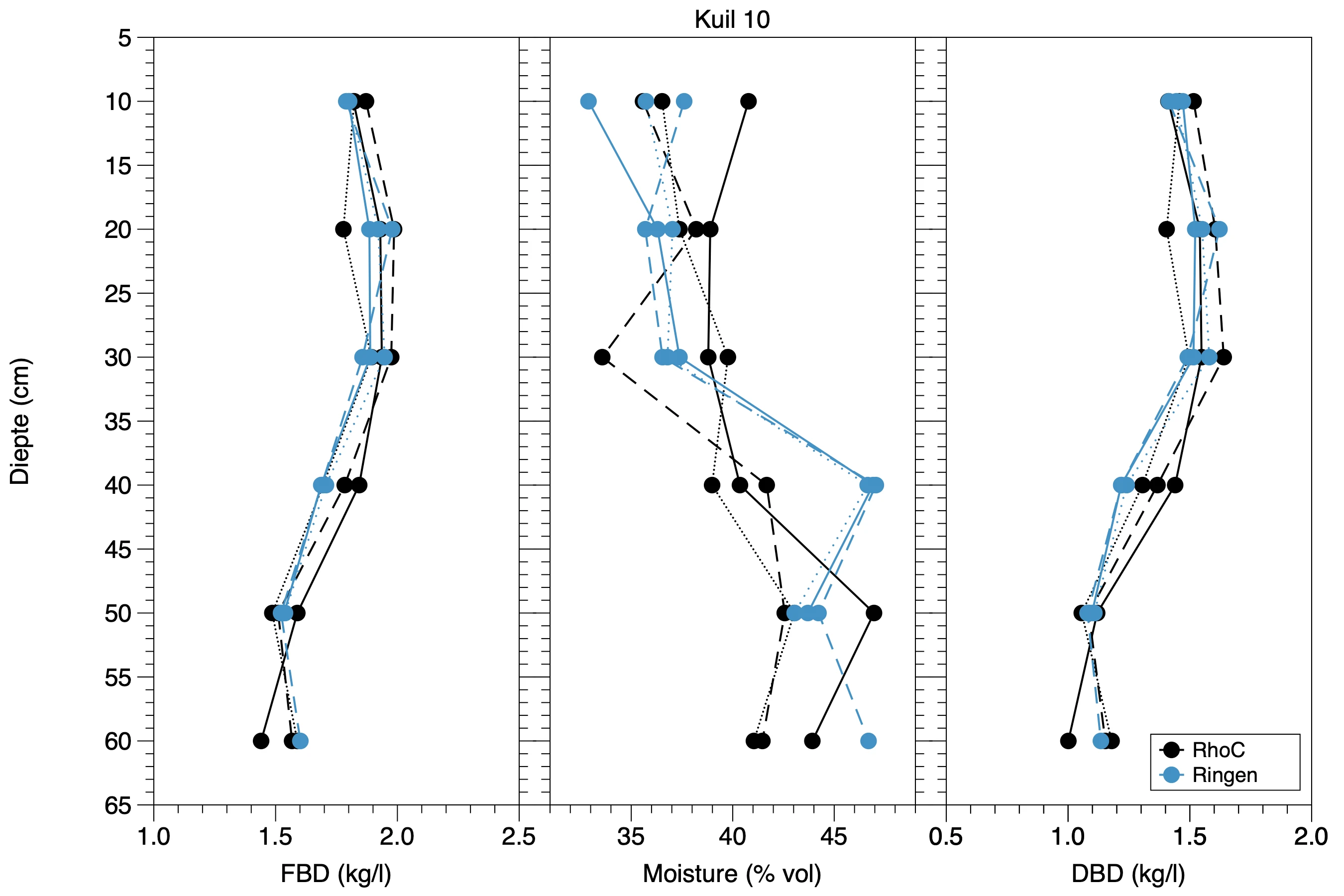Data interpretation
Soil density
Definition
It is important to note that there are different definitions of density. The density (or more precisely, the volumetric mass density ρ), of a substance is its mass m per unit volume V:
The difference between matrix density, field bulk density, and dry bulk density is caused by different definitions of either the mass or the volume. The key to these differences is the porosity φ, which is the volumetric void space in the rock, or the space not occupied by solid materials.
Specific density is defined as the density of the single soil particles. The volume used to calculate the specific density excludes pore space. The mass does not include the fluids in the pores.
Field bulk density is the density of the mixture of soil and water. Both mass and volume include fluid. This is the density as provided by the RhoC5 soil density meter.
Dry bulk density is defined as the density with the water removed. The mass does not include the water, but the volume does include the pore space.
More information on the definitions of density can be found on our wiki: https://the.medusa.institute/wiki/matrix-bulk-and-dry-bulk-density
Soil moisture
As with density, there are different ways to define soil moisture. The soil moisture content provided by the RhoC5 is expressed as the volumetric percentage of soil volume occupied by water.
The RhoC5 moisture sensor is a SDI-12 Drill and Drop sensor from SENTEK. This sensor measures moisture in a soil layer approximately 50 mm thick, with the center of this layer located 100 mm below the center of the density measurement.
The moisture measurement is calibrated for a typical dutch, sandy soil. See also Moisture corrections for soil type .
Dry bulk density
Conversion of the field bulk density ρfb, as measured by the RhoC5, to dry bulk density ρdb requires the soil moisture content θ:
If a user-defined moisture content θuser is available, this value will be used instead.
The soil moisture content and soil density are measured at different depths because the moisture sensor is positioned 100 mm below the density sensor. To calculate the dry bulk density, the moisture content must correspond to the same location as the field bulk density. This is achieved by interpolating the moisture content values based on the available measurements.
For the topmost density measurements, where no moisture data is recorded, the nearest moisture value is used. To ensure moisture measurements cover the entire range of density measurements, it is recommended to start measuring 100 mm above the desired depth, if possible.
Depth
The depth sensor uses radar technology to locate the top of the plastic baseplate. The position of the density sensor is calculated with respect to the bottom of the baseplate. Therefore, it is essential to always use the baseplate.
The depth provided is the center of the density measurement. The density measurement measures an average value over 50 mm layer of soil, so this is 25 mm below and 25 mm above the provided depth.
Example data
The data below show measurements of field bulk density (FBD); soil moisture and dry bulk density (DBD) for the RhoC and Kopecky rings in a triple measurement of a profile pit. Data from: https://bsssjournals.onlinelibrary.wiley.com/doi/10.1111/ejss.13542

